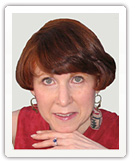Articles: Influence, Relationship & Human Performance Skills Archives
The Fully Realized Professionals: Gaps In Professional Development
January 2006
As we predicted would occur when the situation changed from a buyers' to a sellers' market in the pursuit of talent, the professions are experiencing a renewed interest in professional development at many levels. Not only are firms and their clients seeing an increase in work with a better economy, but also the change in the demographic picture as the large cohort of baby boomer senior professionals start to transition out is significantly influencing the demand and requirements for professional development – training, coaching and mentoring. While more is happening on the training front, important gaps between what is being offered and what "knowledge workers" need in terms of skill and fulfilling of client needs are still evident.
WHAT'S MISSING?
Where are the gaps? What significant topics are not being addressed in most firms? Unquestionably some firms have made tremendous strides and understand how pivotal good training and coaching is to the strength and long-term success of firms. Areas that had lacked attention such as marketing, business development and sales are getting more emphasis. However, management and relationship skills development lag far behind in most firms. While not a comprehensive analysis of professional development needs, here are the areas where neglect is hurting and holding back achievement the most.
* Soft Skills:
For example, how to get the confidence of clients; communication to superiors, juniors and staff, clients, and other stakeholders; how to mentor and give feedback
* Inter-generational Relations:
From understanding and working with the differing attitudes and objectives of firm colleagues and clients of different generations to transitioning of roles and responsibilities, implementing multi-generational teams.
* Identifying and Capitalizing on Personal Style:
Increasing individuals' self-awareness as well as teaching them to "read" other people's styles and flex theirs sets a solid foundation from early on in one's career for business development and management.
* Preparing New Partners:
Helping new partners (or shareholders) anticipate the psychological/intra-firm dynamics, business generation, financial and work/life changes they will encounter and ease adjustment so they don't face additional stress and corresponding reduction in productivity.
* How to Manage People Internally:
Patterns of bad behavior are frequently passed down in the treatment of the next generations, often because people don't know better behaviors. More constructive and productive models need to be taught.
* Transitioning from "Worker Bee" to "Entrepreneur":
To make the mental shift required for more senior positions, a solid understanding of firm economics and both the individual and team as an economic unit is needed. The owner mentality must also respect and foster the integrity of the institution as a first priority.
* Transitioning Planning:
Planning for senior partners in order to assure smooth transitions of responsibilities as well as clients when senior partners approach firm mandated or anticipated retirement ages.
Clearly the gaps apply not only to the younger professionals, but often to the more senior people as well.
LAST, BUT CERTAINLY NOT LEAST
Coaching is the cornerstone of professional development which provides the ultimate benefit. It is personalized teaching that expands awareness, brings clarity, develops new habits that achieve growth, and fosters self-motivation. Studies show that coaching after training increases the value (return on investment) by four times (!), integrating and sustaining newly learned skills. Good ongoing coaching at all levels, is missing in most firms and needs to be “the next big thing.”

